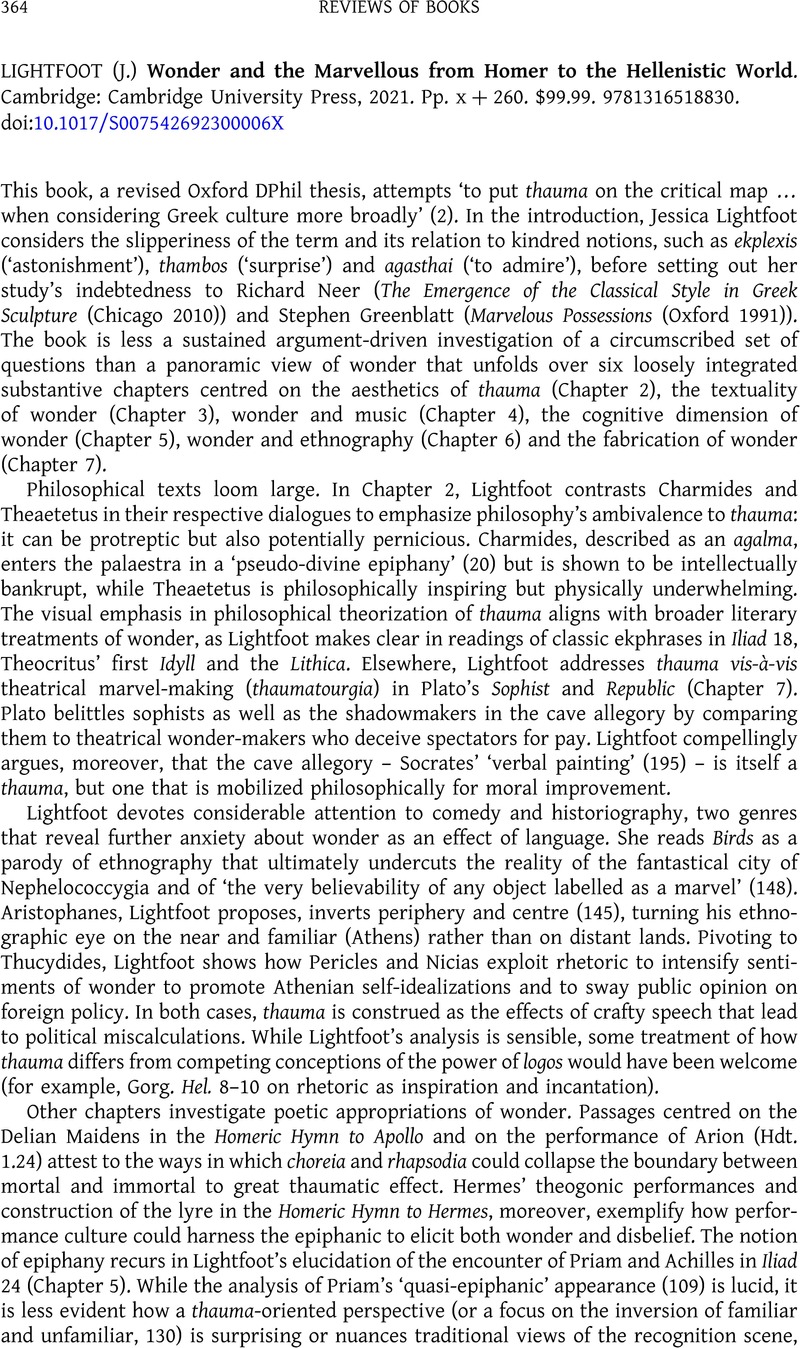No CrossRef data available.
Article contents
(J.) LIGHTFOOT Wonder and the Marvellous from Homer to the Hellenistic World. Cambridge: Cambridge University Press, 2021. Pp. x + 260. $99.99. 9781316518830.
Review products
(J.) LIGHTFOOT Wonder and the Marvellous from Homer to the Hellenistic World. Cambridge: Cambridge University Press, 2021. Pp. x + 260. $99.99. 9781316518830.
Part of:
Literature
Published online by Cambridge University Press: 15 May 2023
Abstract
An abstract is not available for this content so a preview has been provided. Please use the Get access link above for information on how to access this content.

- Type
- Reviews of Books
- Information
- Copyright
- © The Author(s), 2023. Published by Cambridge University Press on behalf of the Society for the Promotion of Hellenic Studies


